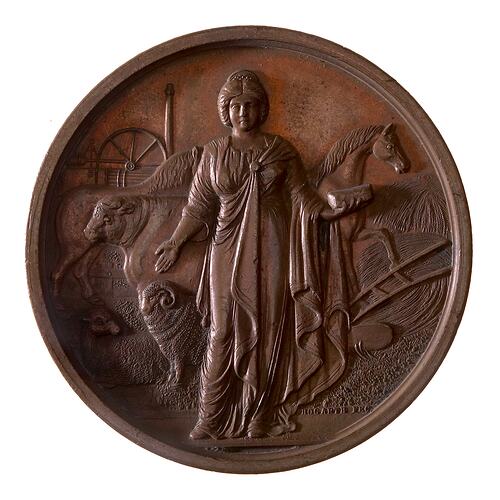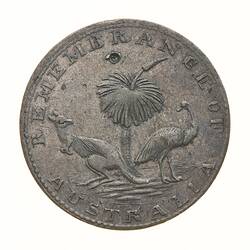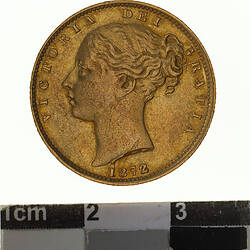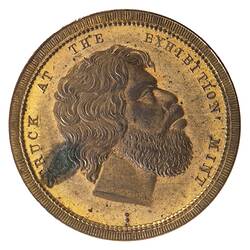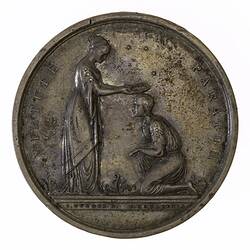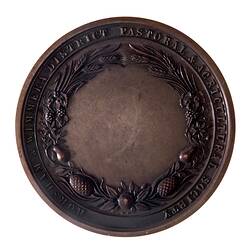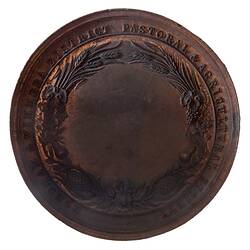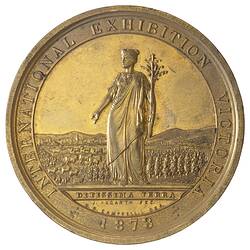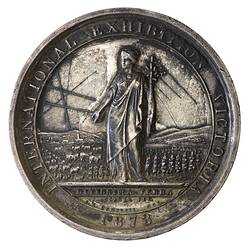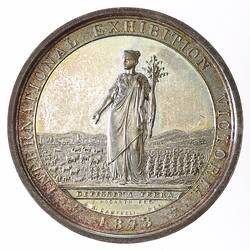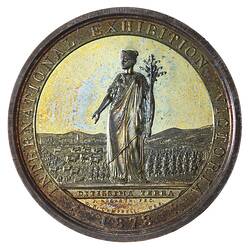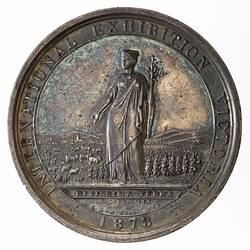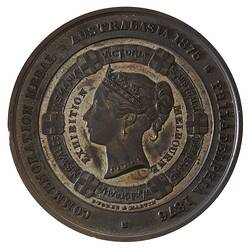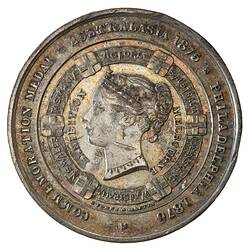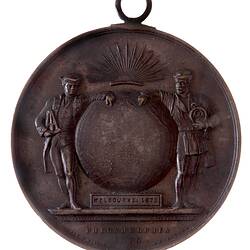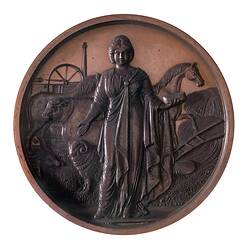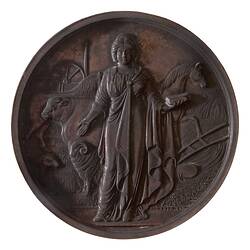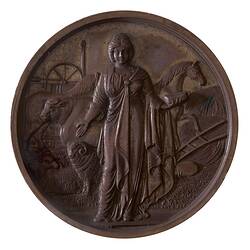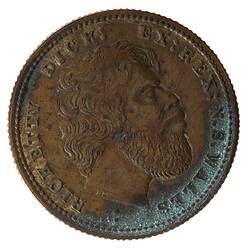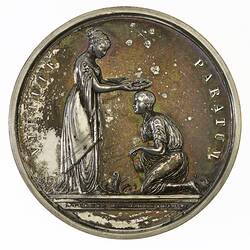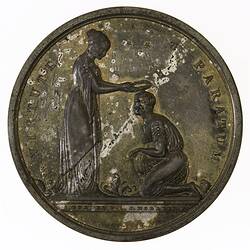Julius Hogarth was born Julius Hougaard in Denmark in 1820. He is believed to have studied under neo-classical sculptor Bertel Thorvaldsen. He and the Norwegian Conrad Erichsen (c.1825-1903) arrived in Sydney together from Hamburg in December 1852 and, failing in their quest for gold, returned to the gold trade. He began to use the name Hogarth around this time.
The workshop of Hogarth, Erichsen & Co. was established about 1854 at 252 George St, Sydney. They were probably responsible for developing the style of jewellery incorporating realistic depictions of Australian flora and fauna, and were pre-eminent in this style during the 1850s. The company also became known for its threepenny tokens produced from 1858 to 1860. In November 1856 Hogarth became a naturalised British subject, and two years later married 18-year-old Charlotte Tegg.
Both Hogarth and Erichsen exhibited at the Paris Universal Exhibition in 1855, and Hogarth at the London International Exhibition in 1862. From March 1859 Hogarth, Erichsen & Co were located at 312 George Street, and their workshop employed several other fine craftsmen, including C.L. Qwist. By 1860, however, Hogarth, Erichsen & Co. were in financial difficulty and declared bankrupt. Their stock was auctioned off in January 1861.
Hogarth was undaunted, and set up his own shop at 99 Hunter St. The new business did not thrive, however, and in 1862 was robbed and valuable gold nuggets, jewellery and watches were stolen. Hogarth subsequently moved to 21 Hunter Street, and in 1865 ran his business from 6 Hunter Street. In May that year he was again declared bankrupt, and decided to move to Melbourne with his wife and two children, hoping to work for Stokes and Martin.
His first work in Melbourne was an Aboriginal head for the 1872 Melbourne Exhibition. It was one of the finest pieces yet made in Australia, and it made his employers, Stokes and Martin, the outstanding colonial medallists. The company was awarded the commission for the 1873 Victoria International Exhibition medals. Hogarth's dies were of world standard. The medal was designed by O.R. Campbell, who later collaborated with Hogarth on the fine Melbourne-Philadelphia Exhibition medal of 1876.
In 1878 Hogarth returned to Sydney, now with seven children. He had a jewellery shop in Bailey St, Newtown. He died on 5 March 1879, aged 59, from 'chronic liver disease'.
References:
Czernis-Ryl, Eva (1996). Early Australian Silver Statuette: A Story of Julius Hogarth and Ricketty Dick
Sharples, John P. (1990). Medals as Art: Australia and the Meszaros Tradition, Australia, p.16
National Library of Australia website http://www.nla.gov.au/pub/nlanews/2003/oct03/article1.html, accessed 20 Jan 2004
More Information
-
Keywords
-
Localities
Melbourne, Victoria, Australia, Sydney, New South Wales, Australia, Denmark
-
Authors
-
Article types
